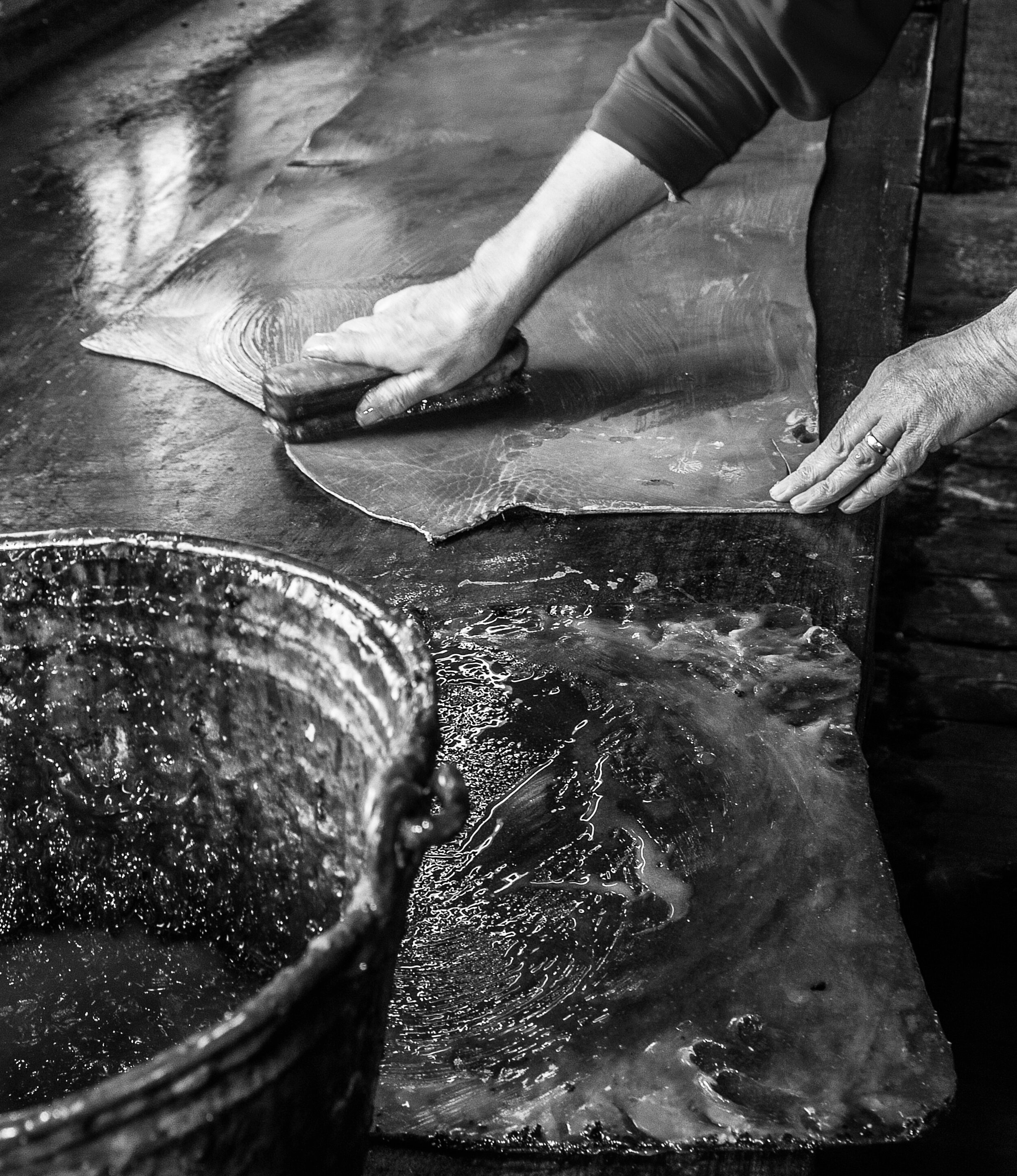J&FJ BAKER
THE PROCESS
J&FJ BAKER
Video by: Paul Glendell
J & F J Baker have been Oak Bark tanning since 1862 at a tannery that dates back to Roman times. Generations of knowledge have perfected our process to produce beautiful, hardwearing and unique leather with superior tensile strength. Using all natural, locally, and sustainably sourced materials each piece of leather takes over a year to produce and many hours of labour intensive work.
01
Our hides come from Beef cattle raised in Devon. As a predominantly, free-range farming area, these cattle are a by-product of a sustainable meat industry. The raw hides arrive salted and are soaked in pitts of Lime and water. This loosens the hair follicles ready to be put through the de-hairing and fleshing machines which removes the hair and fat from the skin. Once the hides have passed through these machines they are each inspected and cut into Bellies, Butts, and Shoulders. Some are now de-haired by hand in the traditional way, over a beam using a de-hairing blade.


02
The hides are now ready to be tanned. Oak bark, taken from sustainably Coppiced UK trees is dried and then crushed. We have a 400 year old mechanism that is run by a water wheel, which grinds the bark into smaller pieces. This takes time and muscle power to feed the grinder and shovel the bark to the latches, where it is soaked with water from the River Coly. Like great cups of tea, the bark is used to make up strong to weak liquors of tannin. This liquor is then pumped up to the tanyard pits. Each hide is suspended on a wooden pole over a pit and gently washed in the Oak Bark tannin for 3 months. Our water wheel also drives the mechanism that lifts and pushes columns that rock the frames the wooden poles are resting on, ensuring an even tan.
The hides are then layered flat one on top of the other with Oak Bark scattered between each piece, for another 9 months, making the tannage a 12 month process. This lengthy, laborious process protects the skin's natural fibres, making our leather stronger and more durable than other veg tanned products.
03
The leather is now taken out of the tanning pits. We use a variety of fat liquors and oils in order to strengthen and add nourishment to the fibres. Our harness and stirrup leather will receive further treatment in the form of dipping whereby the leather will be soaked in tallow and grease. This will toughen and add extra durability to the leather creating a long lasting and strong material.
The leather is now dried in our drying shed, heated by our biomass boiler, using our own waste to power it. Before we can hang it to completely dry, we hand set the leather to remove any unwanted creases and uneven areas and to leave us with a nice flat finished product. Once in this state we are able to hand stain according to the colour desired. We apply four coats of stain to ensure a deep and even colour throughout the surface of the hide. Once the stain Is level and fastened it is then ready to be finished.


04
Now we have finished staining the leather it is ready for a final covering of our specially blended dubbin. We have developed nearly 20 different dubbins each uniquely mastered to enhance the leather’s intended use. Harness backs, stirrup butt and bridle butts each have a different dubbin to support the leather’s different properties. The dubbin feeds into the fibres to give the leather better durability, water resistance and a nice level finish. We do this by hand with a brush to ensure the dubbin is thoroughly worked in and evenly spread. Once this has been left to soak in for a week we have a finished product that is ready to be collected or sent to the customer. When the leather is ready to be used the white waxy coating will rub off whilst being worked on or can be buffed off with a soft bristled brush, such as would be used in shoe polishing.